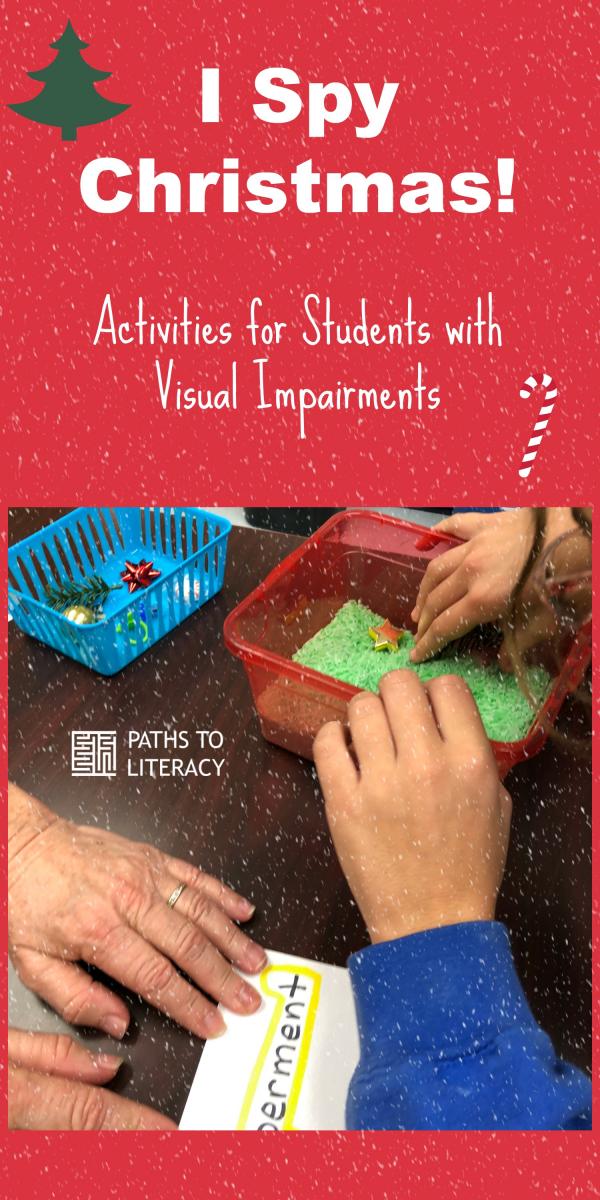I Spy Christmas
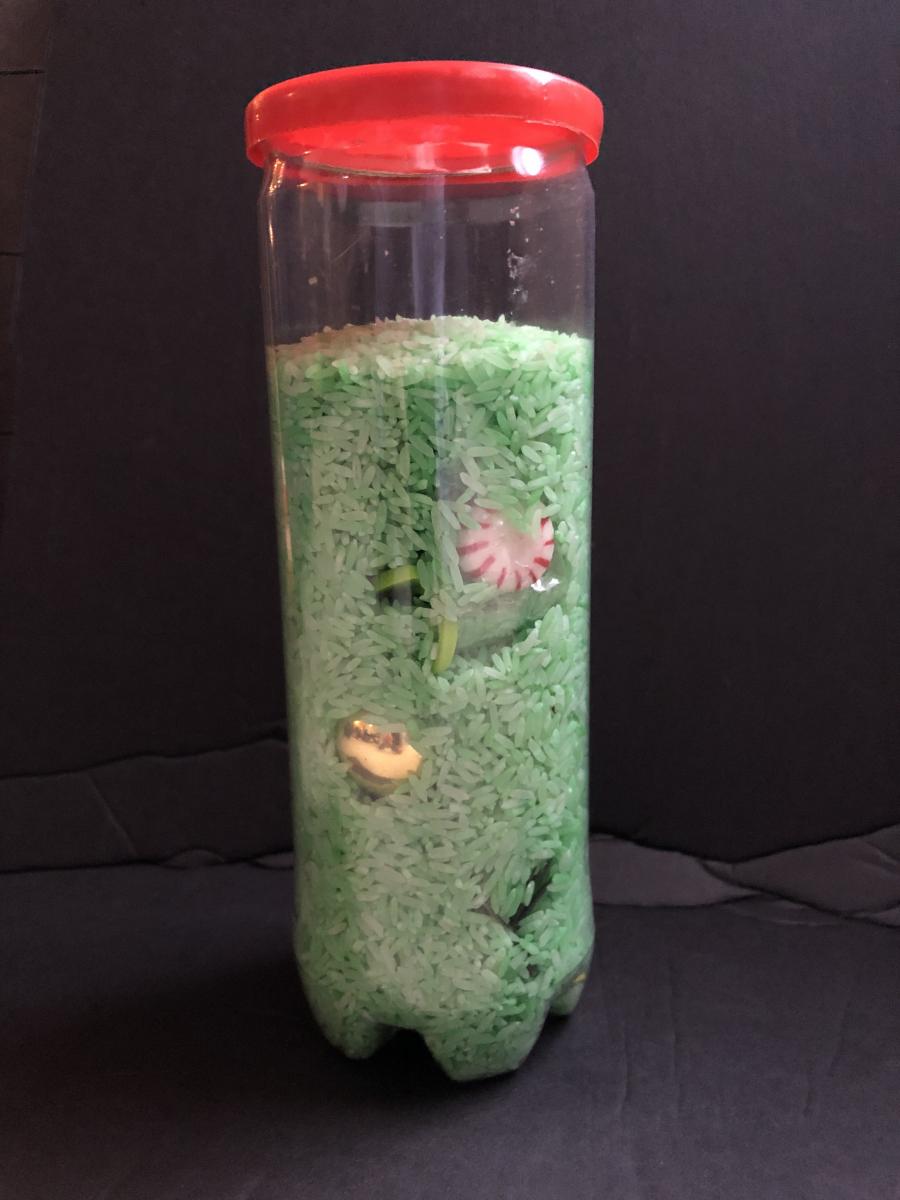
and Misty Epperson
All children love to play hidden object games. Here is an activity that I found on Pinterest that students with vision impairments can participate in with a few minor accommodations.
I Spy Tubes
First make the “I Spy Christmas” tubes. You could pick any theme. A Christmas theme was chosen here, but other themes include toys, other holidays, etc. The reason to do a theme is to use high interest words. Ideally the teacher would ask the child to select the object to go into the tube, but for this activity the objects were chosen for them.
Materials:
- Tube or other container: tennis ball tube, Foss water bottle, or even a clear pencil case.
- Filler: white or colored rice (uncooked), coarse salt, or black beans, etc. (To dye rice: use a few drops of food color and a tablespoon of vinegar per 1 cup of rice. Let the rice dry after dying for at least an hour before using.)
- Small objects that will fit in your tube: red bow, Santa ball, Christmas tree ring, shiny star, lightbulb, ornament, peppermint candy, and pine needles or any objects that fits your theme
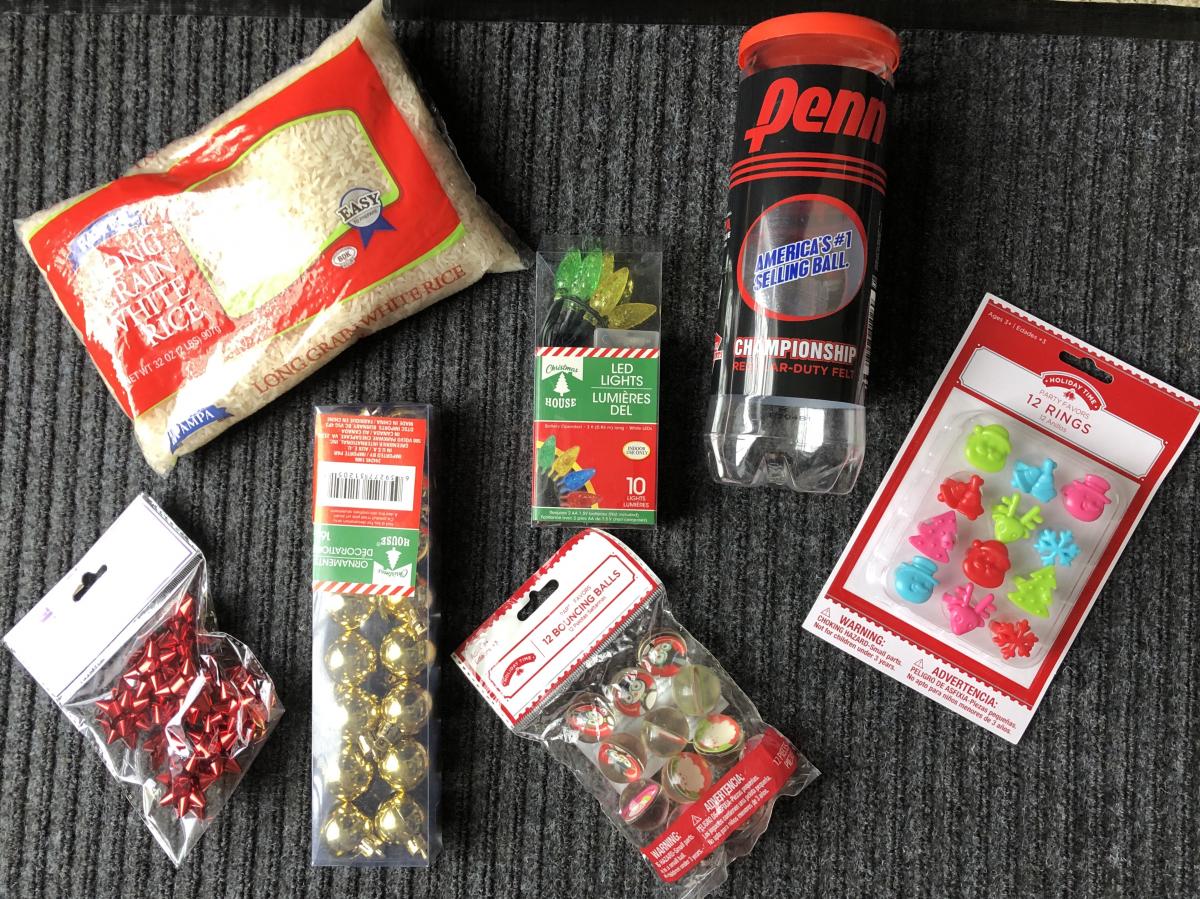
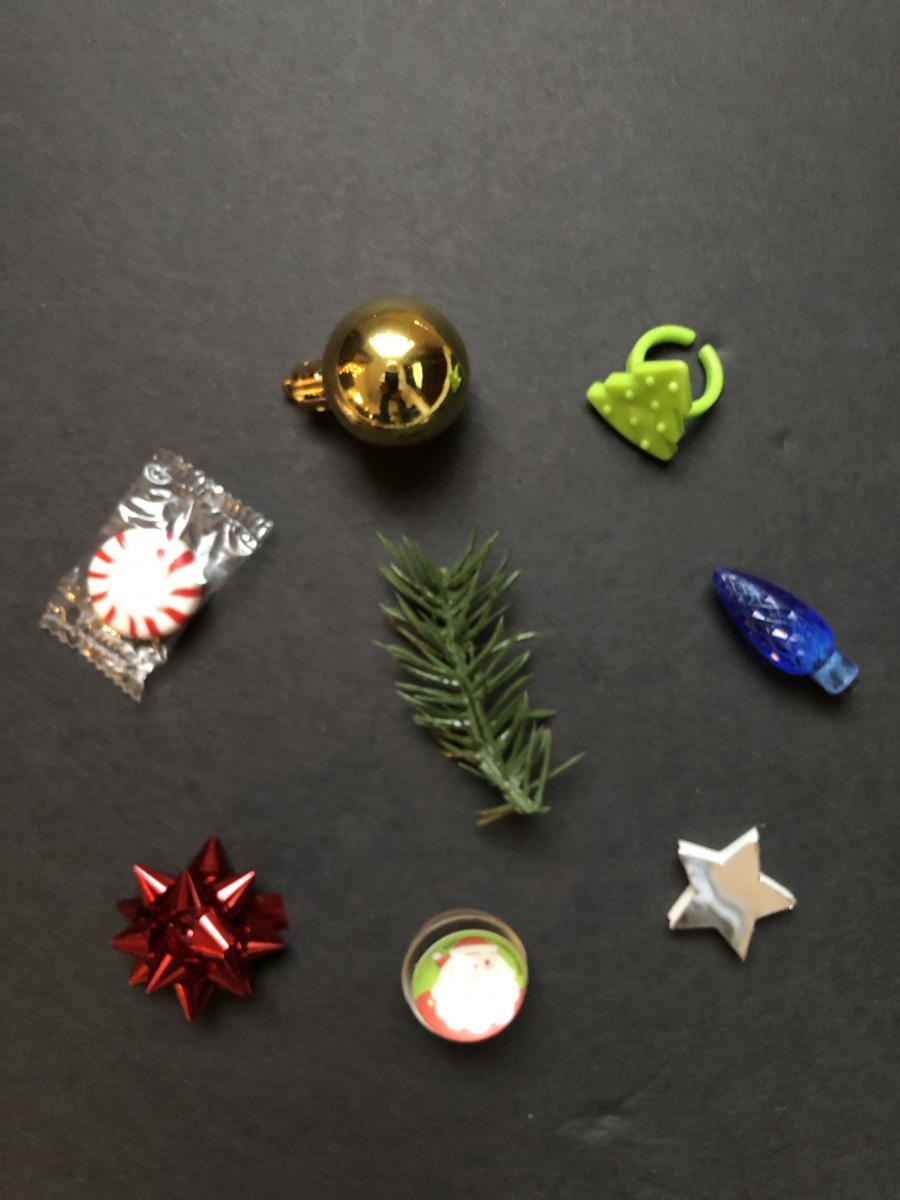
Directions:
Put it the colored rice or other filler along with the small objects into your tube or other container.
This activity could be used across multiply setting with students with differed visual condition with the following adaptations:
- Braille Students: Braille cards based on the directs in “I-M-ABLE”, small container that will hold the contents of the tube when poured out to explore, and/or a second set of objects that could be used to match object to object
- Pre-braille Students: Tactile Connection Cards
- CVI Students: Real Objects: shiny or preferred colored objects, pictures of exact objects, and words with salient features outlined
Braille Learner: Using the I-M-ABLE Whole Word Approach
This braille activity is based on strategies used in the book “I-M-ABLE by Diane Wormsley. Cards were designed with leading lines and ending lines of dots 3-5 at the beginning and end of each fully-contracted word. As the words were introduced we discussed the features of each one, such as it is a long word, a short word, or it has a certain contraction or a capital indicator, etc. The student should be looking at the whole word, rather than each individual letter. All students learn to read in different ways, with phonics being one way and sight words another. You may have seen one of those paragraphs where letters are missing, but you can still figure out what it says from the first and/or last letter of the word and the content, of course. I-M-ABLE strategies kind use a similar idea of wholeness. While it is important to teach phonics and spelling, the whole word approach should also be taught.
In this activity the whole word was introduced and its tactile features were emphasized.

Each word was reviewed as new words were introduced until all 8 words were introduced and reviewed. When the student knew most of the words, the “I Spy Christmas” activity was introduced.
The “I-Spy-Christmas,” activity tube was dumped into a container, so that the participant could tactilely find the objects. If the child has vison, you could also have them search for the objects in the tube using any visual accommodations needed. The student was instructed to read the word and find the object in the rice. You could also reverse the activity, so that the student starts by finding the object and then find the word cards.
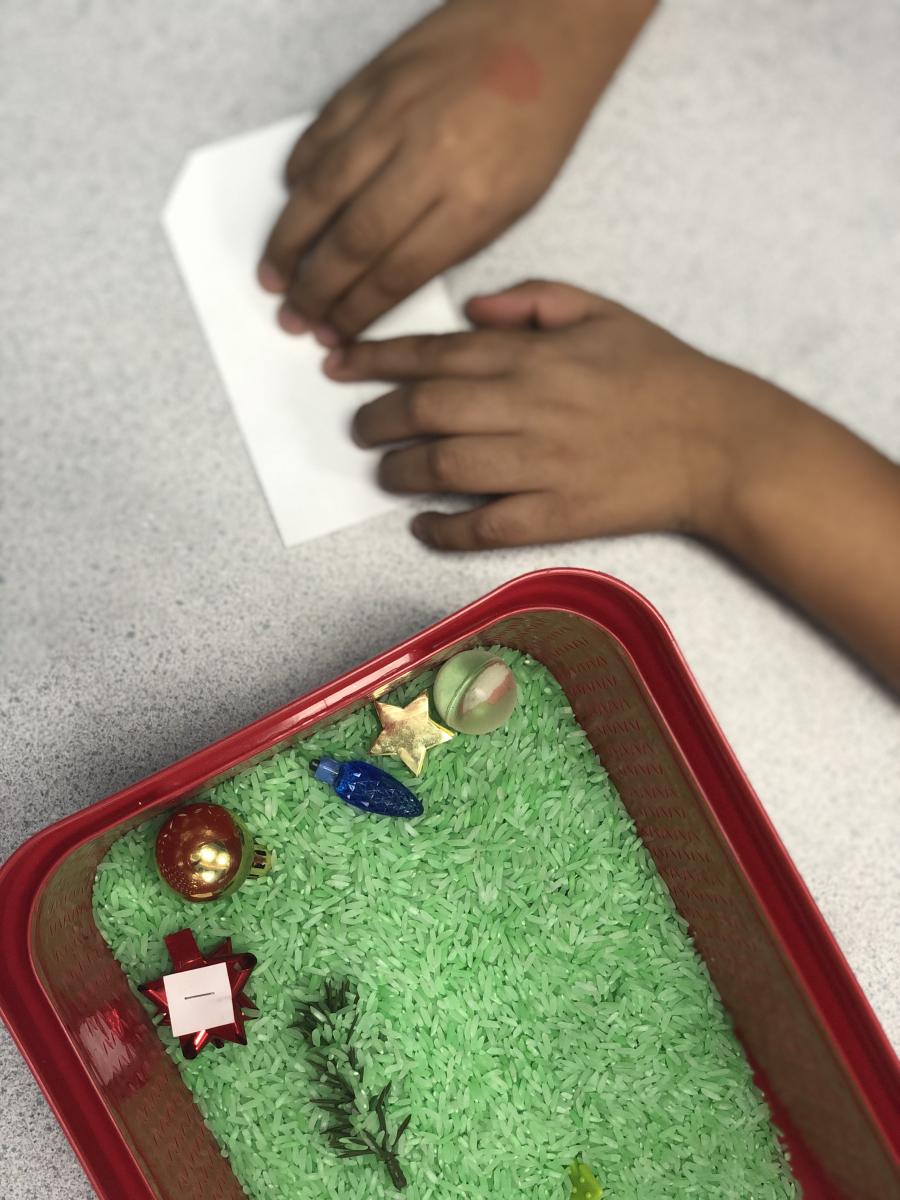
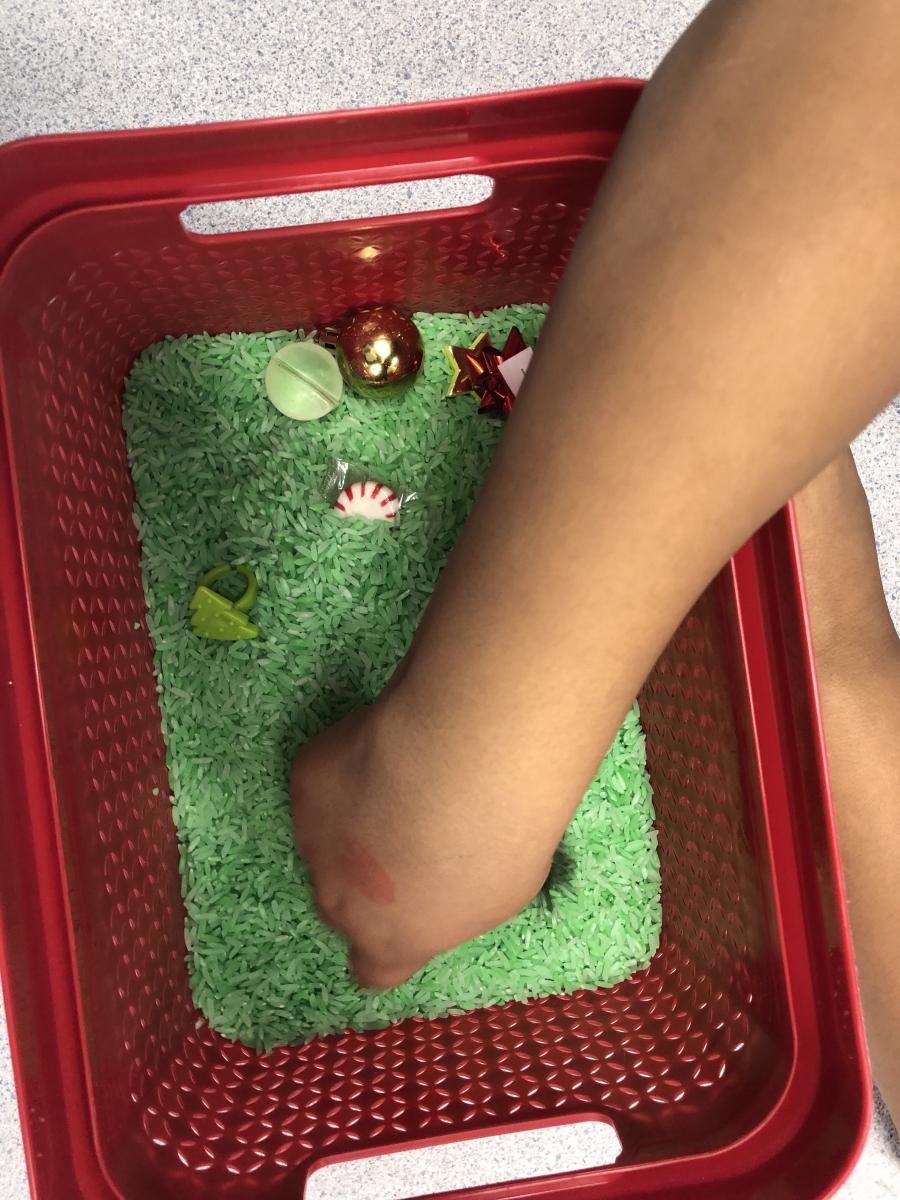
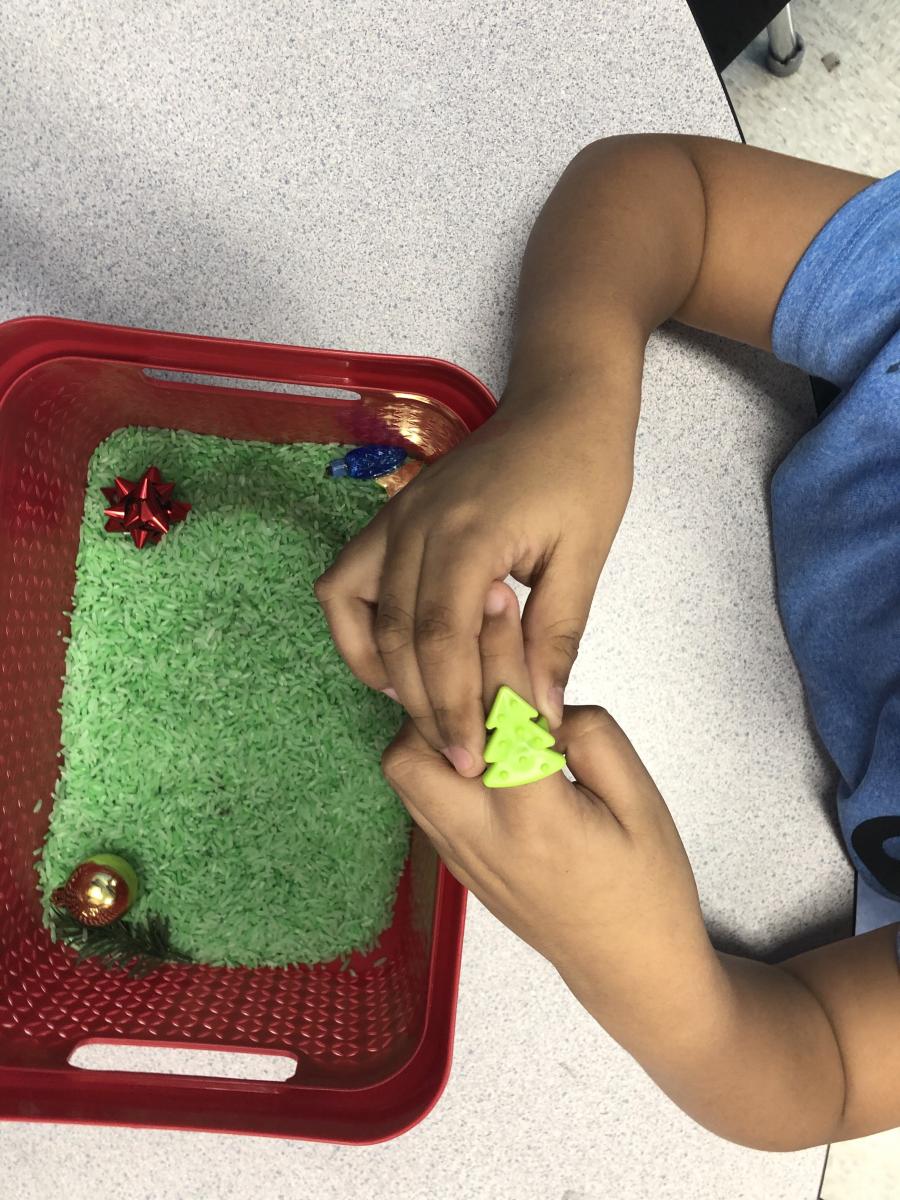
Pre-Braille Reader
For a pre-braille reader Tactile Connection Cards from American Printing House for the Blind can be used with object symbols. In this case, the cards were created for reading rather than for communication, although they could be used for both.
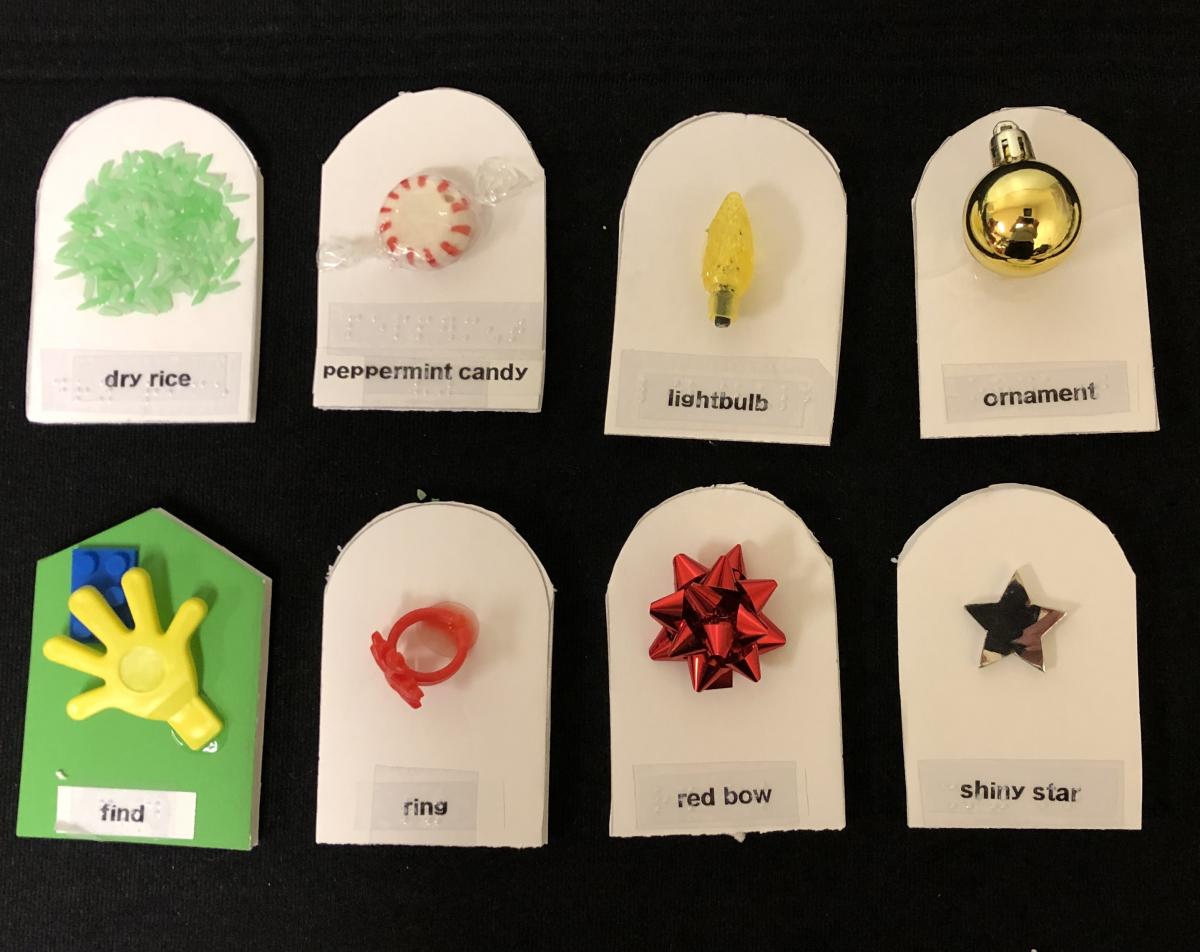
Tactile Connection cards have been used as this student's reading medium for over a year and ware based loosely on the concepts taught in “I-M-ABLE.” Once he could read several of the object tactile cards, the teacher asked him to find the objects in the rice that had been poured out in a container. He was then asked to read a sentence about each of the objects he found, as shown in the video below. "I found shiny star."
Phase 3 CVI Reader Using Salient Features
We used salient feature cards with a student with CVI (cortical visual impairment), Phase III. Again the words were taught, but this time the words were written on blank note cards and outlined with a yellow marker to point out salient features. The student was asked to find ways each word looked different. Then the student was asked to identify the words based on those differences and how they compared. This student with complex needs was able to quickly distinguished between two words, but had trouble when a third one was added. She was also able to use pictures of the object to indicate and locate matching objects.
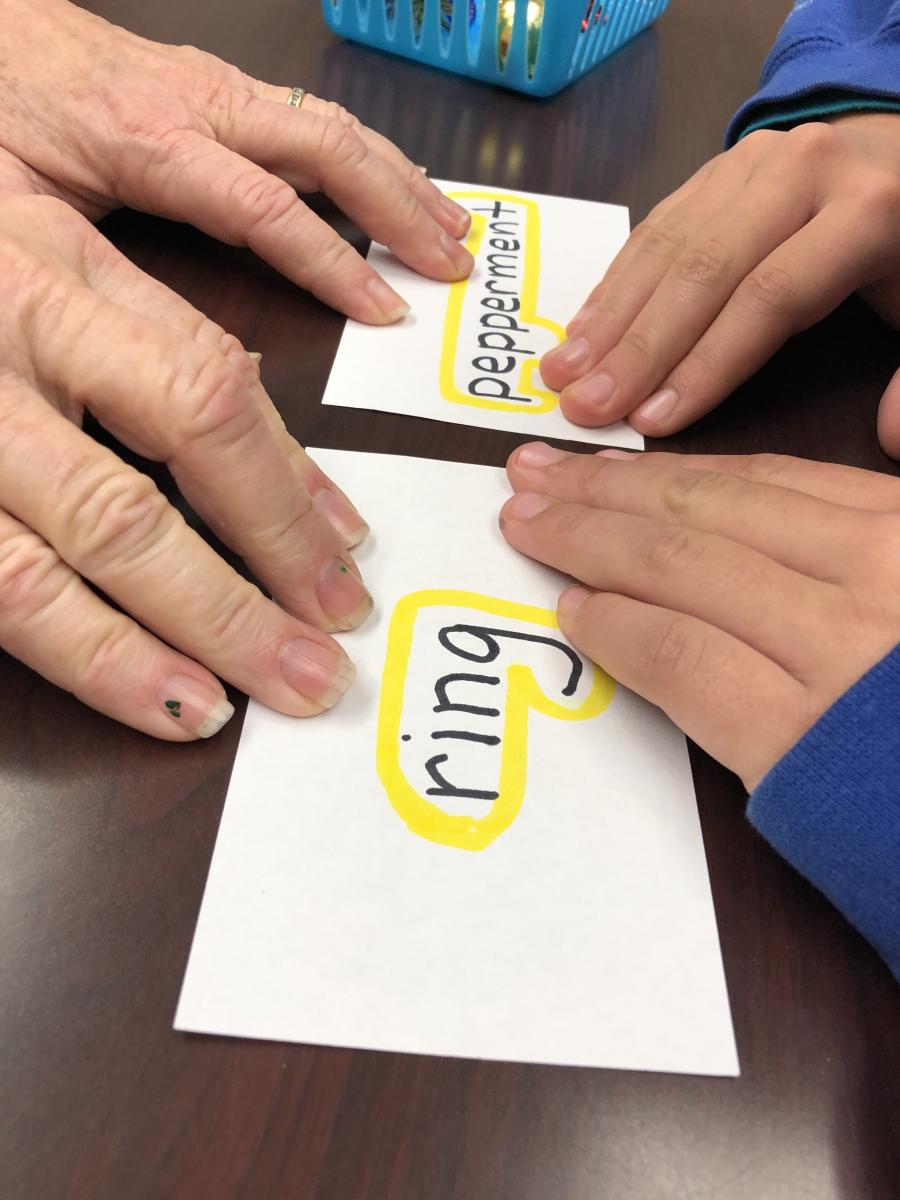
She also enjoyed looking for the objects in the tube, but when she had trouble identifying them she was able to pour them out into a container to look for the objects tactually.
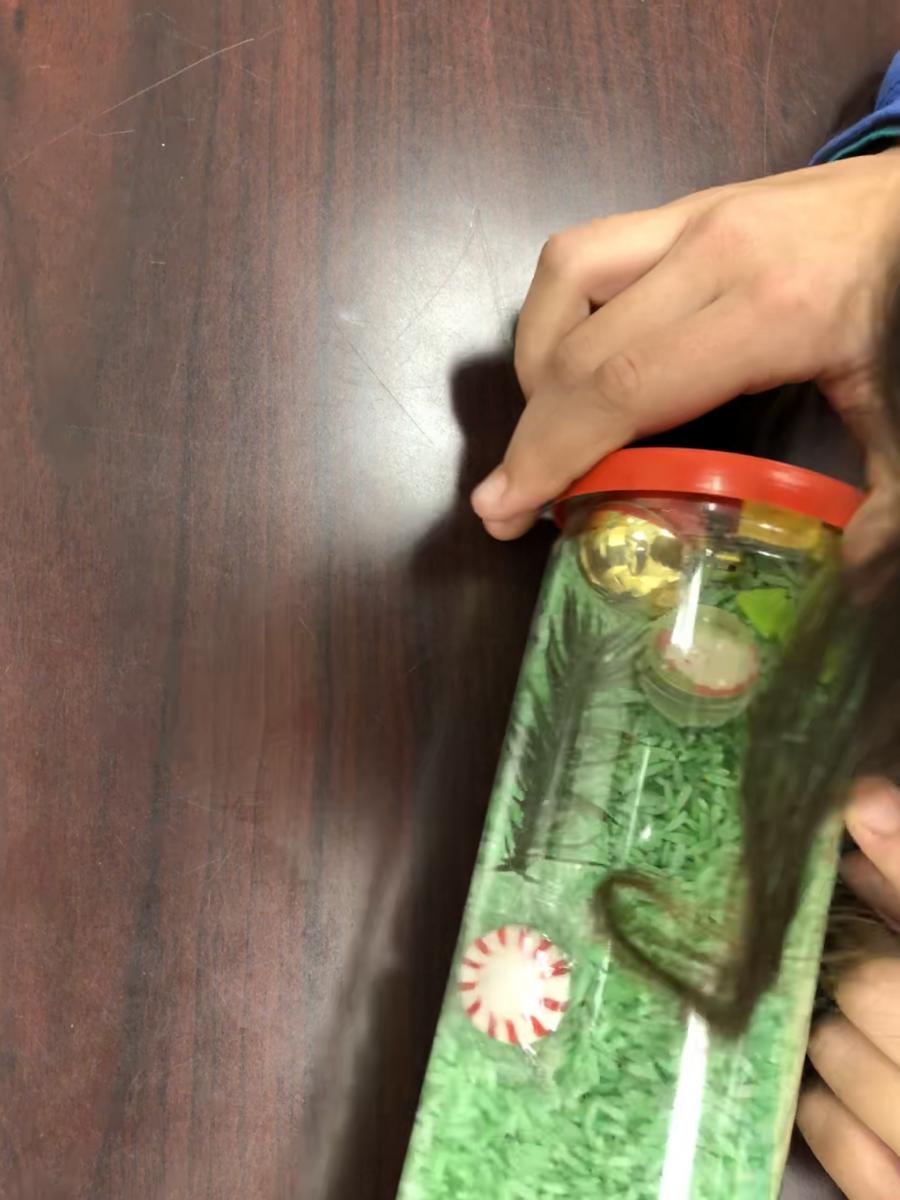
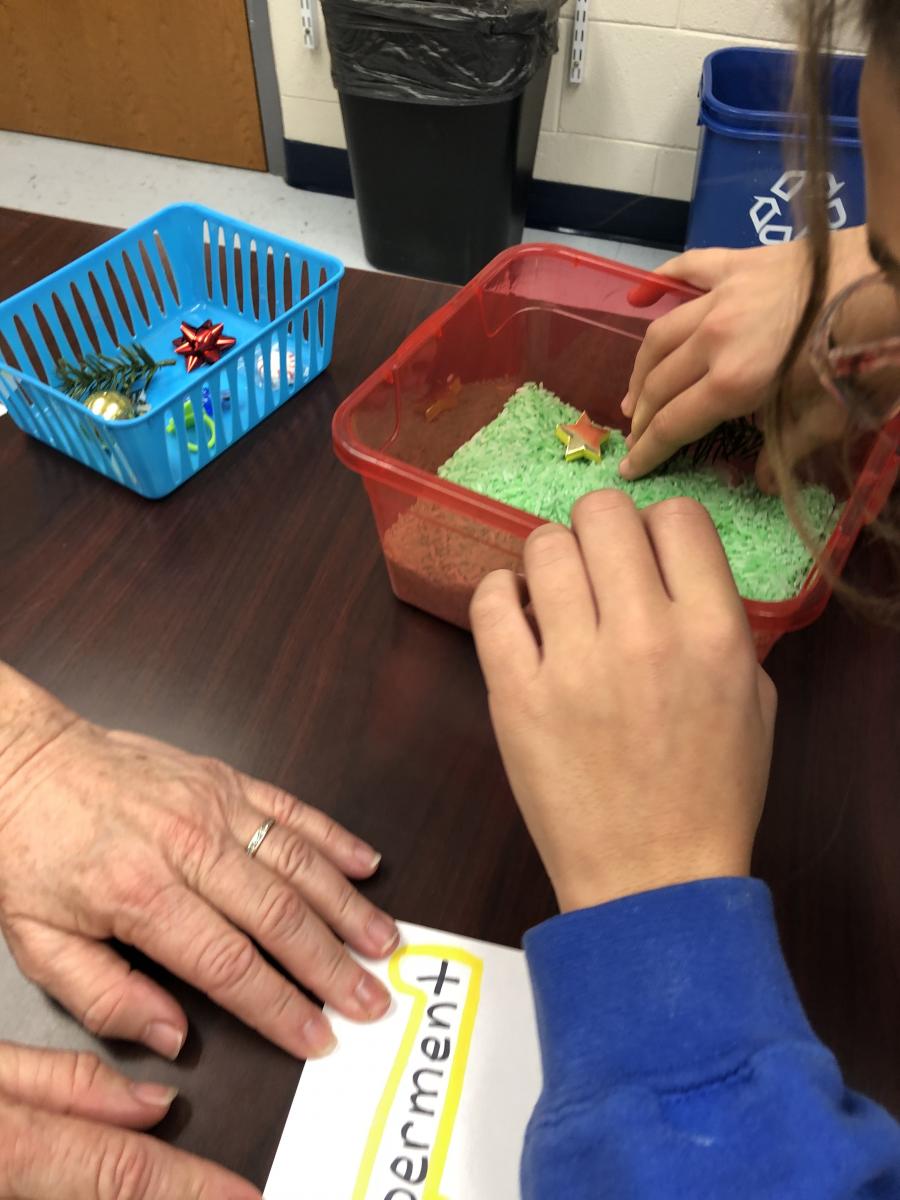
This is such a simple activity that is so versatile. It can be used for any subject or theme and adapted for all students with visual impairments. It could also provide an opportunity to increase social interaction with peers.
